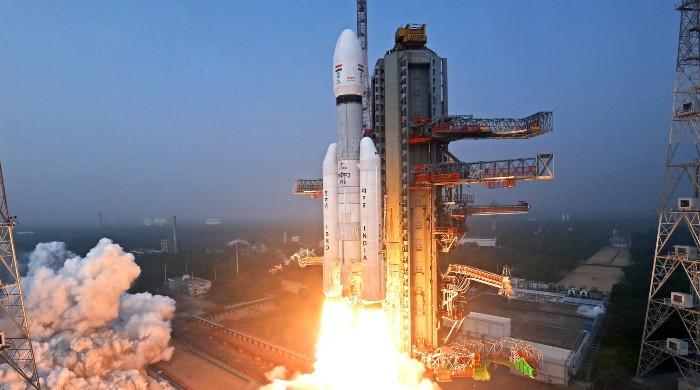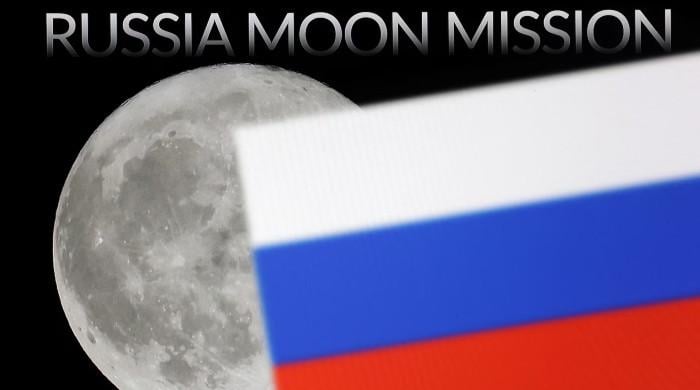Mystery multiplies: What if it wasn't Big Bang that brought about universe?
Big Bang theory revolves around the crucial concept of the universe originating from an immensely tiny speck
July 28, 2023

The age-old question of why something exists rather than nothing serves as a profound and intriguing inquiry that has fascinated both the realms of science and philosophy, beckoning us to unravel the mysteries of our existence, BBC's Science Focus reported.
The prevailing explanation for the expanding universe is the Big Bang theory, widely embraced by most scientists. This theory revolves around the crucial concept of the universe originating from an immensely tiny speck, akin to the size of a coin, yet in a state of incredibly high temperature and density.
The term Big Bang was coined in 1949 by British scientist Fred Hoyle, who used it to belittle a competing theory that contradicted his own "steady state" perspective.
Hoyle's view proposed that the universe had always existed, continuously evolving, but not expanding.
However, the emerging Big Bang theory offered an alternative account of the universe's origins and gained widespread acceptance over time.
"In the domain of evolutionary theory, the quest for understanding traces all life on Earth back to a singular, common ancestor known as the last universal common ancestor (LUCA). Scientists are captivated by the search for LUCA as it offers insights into the origins of life itself," writes Prof Stephon Alexander at Brown University, Rhode Island.
He is a theoretical physicist specialising in cosmology, particle physics and quantum gravity.
"However, our thirst for knowledge doesn't stop there. We push further to explore the origins of Earth and the vast universe that envelops it," writes Prof Alexander.
Taking a cosmological perspective, a breathtaking interconnectedness between the birth of stars, the formation of planets, and the expansion of the Universe unfolds before us.
"The cosmic dance of creation reveals a delicate interplay between the Universe's expansion rate, the gravitational collapse of dark matter, and the capture of hydrogen – the essential element necessary for the formation of stars," according to the professor.
In accordance with the Big Bang model, the universe underwent a rapid expansion from a highly compressed primordial state, leading to a significant decrease in both density and temperature.
In the subsequent stages, processes might have established the dominance of matter over antimatter, which is evident in the universe as we observe it today. These processes also predict proton decay. During this phase, a diverse range of elementary particles likely coexisted. After a few seconds, the universe began to cool, creating conditions favorable for the formation of certain nuclei.
The theory further predicts that specific quantities of hydrogen, helium, and lithium were produced during this cooling period. Remarkably, the observed abundances of these elements today align with the predictions of the theory. Around a million years later, the universe had cooled sufficiently for atoms to come into existence.
This intricate cosmic choreography has paved the way for life as we know it to come into existence. Without it, our very existence would not have been possible.
Hence, the cosmic origin tale commences with a fundamental question: What sparked the expansion of spacetime in the Universe?
The widely accepted model for the expanding Universe is known as Big Bang Cosmology, a term coined by the esteemed English astronomer Fred Hoyle during a BBC Radio broadcast in March 1949.
According to this theory, all matter in the Universe originated from an enormous explosion at a specific moment in the distant past.
Supporting this idea of an expanding Universe is Einstein's well-verified theory of general relativity, which envisions spacetime as a flexible medium capable of bending, expanding, and collapsing.
If we could rewind the cosmic clock, we would witness the Universe contracting into an infinitesimal point of infinite temperature, energy, and spacetime curvature – an occurrence known as the Big Bang singularity.
For researchers like Stephen Hawking and his colleagues, understanding the enigmatic nature of this singularity has been a central pursuit. The question arises: If everything, including time itself, emerged at the Big Bang, how can we discuss events before the existence of time?
Thankfully, bold cosmologists have dared to venture beyond the Big Bang singularity, seeking alternative explanations that transcend the challenges posed by infinities and the origin of time.
One intriguing concept proposes that a cosmic epoch predating the Big Bang led to a new physics paradigm, effectively replacing the singularity.
Given that Einstein's theory adheres to the principles of classical physics, one potential escape route involves the existence of a quantum 'bridge,' connecting an expanding Universe to one that collapses into a Big Bang – an event commonly referred to as the Big Bounce.
This path of exploration necessitates the extension of Einstein's theory into the realm of quantum gravity, with string theory and loop quantum gravity offering potential variations of the Big Bounce within the framework of quantum gravity.
"In a previous discussion, I touched upon the paradigm of cosmic inflation – a period of rapid expansion that presents intriguing connections to phenomena like the cosmic microwave background and the origin of structure in the Universe," Prof Alexander said.
However, mathematical theorems established by Hawking and Roger Penrose indicate that inflation fails to elude the initial singularities in the Big Bang.
Indeed, inflation itself falls prey to its very own Big Bang singularity!
One captivating idea that fuels my imagination is the concept of cyclic inflation – a framework that harmoniously blends cosmic inflation with the notion of cyclic collapse and expansion, or bounces.
This intriguing concept, born from the collaborative efforts of former postdoctoral researcher Dr Tirthabir Biswas and myself, proposes that the Universe undergoes an infinite series of collapse and expansion cycles.
Following a critical cycle, with sufficient entropy accumulated, the Universe experiences a rapid acceleration of spacetime known as inflation. By incorporating cycles of bounces, cyclic inflation embraces the advantages of inflation while potentially providing an escape from the confines of the Big Bang singularity.
With cosmologists daringly exploring beyond the confines of the Big Bang, an exhilarating challenge lies before us: to discern observational predictions that distinguish between these competing models of the early Universe and our origins. These distinctive predictions hold the key to determining which model accurately portrays the genesis of our existence.
"For me, a tantalizing hint arises from the observation that supermassive black holes seem to form too early to be accounted for by our current cosmological standard model. Could a specific bouncing or cyclic model elegantly elucidate this cosmic anomaly?"
"As we progress on this intellectual odyssey, the mysteries of our cosmic origins continue to unfold, beckoning us to delve even deeper into the enigmatic tapestry of the Universe. With each discovery, we draw closer to unravelling the secrets that illuminate our existence and shed light on the timeless question: why does something exist rather than nothing?" Prof Alexander says.









